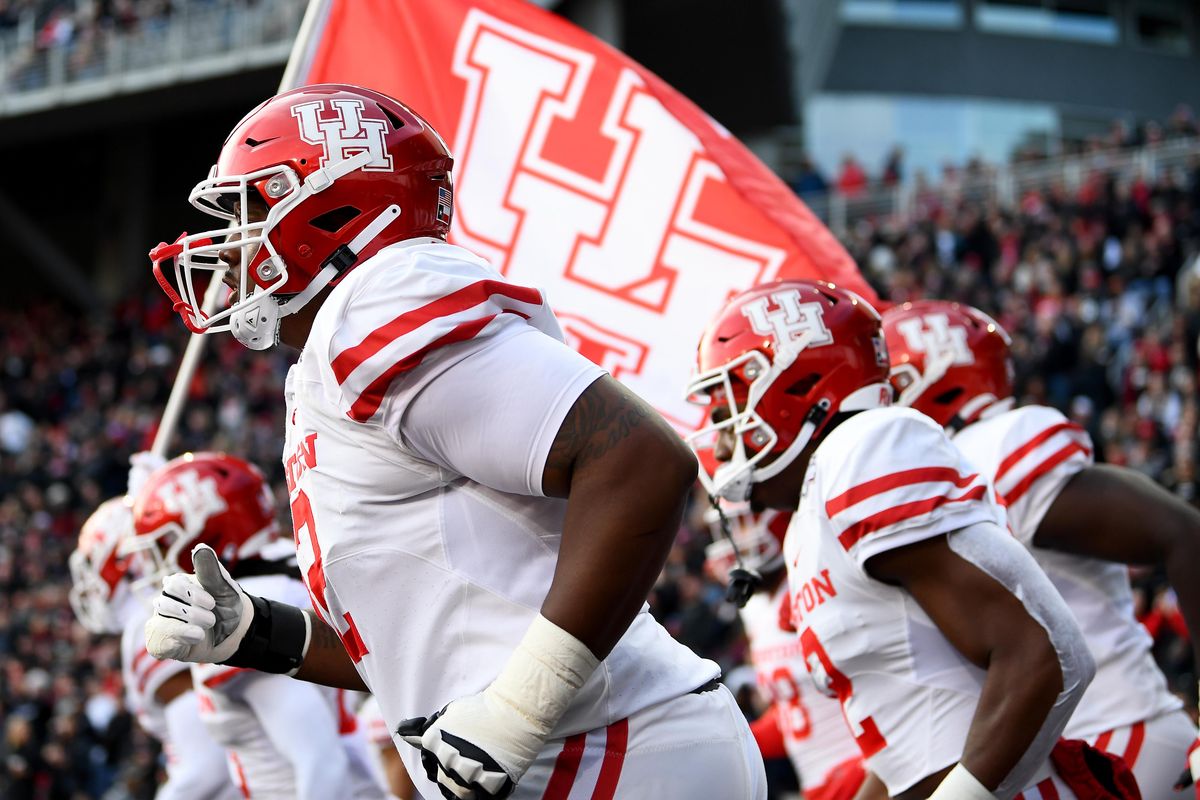HOME IS WHERE THE HEART IS
There's no way around it, overcoming this obstacle is still a big concern for Houston
Sep 6, 2022, 12:17 pm
HOME IS WHERE THE HEART IS

Last week Texas Monthly ran an interesting and perplexing article: Can (University of) Houston Football Figure Out a Way to Fill Seats?
The article was written by my friend and former radio partner Richard Justice. But let’s not hold that against the article. Richie did a terrific job here.
Justice offers many reasons why the Cougars, despite recent on-field success, well paid and respected coaching staff, generous funding, excellent facilities, Top 25 ranking, and bowl game appearances, have trouble packing their comparatively small 40,000-capacity TDECU Stadium.
Most times, UH crowds are around 25,000. The last time they drew 30,000 fans was in 2018. Last time UH played in front of 40,000 fans at home was in 2016.
Meanwhile, the University of Texas and Texas A&M routinely draw crowds in excess of 100,000 fans. Of course, the main reason for UH’s drawing woes is because the Coogs play in the American Athletic Conference, a non-Power 5 conference. So big name, ticket-selling opponents, whose fan base travels to road games, rarely visit TDECU Stadium. UH’s football schedule is dominated by conference rivals like East Carolina, Memphis, South Florida, Temple, Tulane, Tulsa and others.
UT will host No. 1 Alabama this Saturday. Good luck finding a ticket for 100,000 capacity-plus Darrell K. Royal-Texas Memorial Stadium. Other teams on UT’s schedule include No. 9 Oklahoma, No. 8 Oklahoma State, and No. 9 Baylor.
No. 6 Texas A&M will play No. 16 Miami, No. 15 Florida, No. 18 Arkansas, No. 1 Alabama, No. 22 Mississippi, plus traditional bowl-bound LSU and Auburn.
There isn’t a single Top 25 team on UH’s remaining schedule.
Next year, UH is moving to the Big 12 Conference which should boost interest and attendance for the Cougars. However, the Big 12’s most glamorous members, UT and Oklahoma, are following Texas A&M’s exodus to the mighty Southeastern Conference.
Justice points out that UH is largely a commuter school. Only 8,000 students of its 40,000 enrollment live on campus.
I’d like to add two more reasons why UH football doesn’t draw huge crowds that its players and coaches deserve. And there’s nothing that UH can do to fix these reasons.
UH plays in a city where there’s an NFL team. And UH plays in a city where fall is the prettiest season of the year.
College teams that play in NFL cities typically have trouble drawing fans. It’s just the way it is. Here’s a headline from last week’s college football roundup: “USC Embarrassingly Couldn’t Fill Stadium During Debut of Lincoln Riley and Caleb Williams.”
If USC, playing in a Power 5 conference, in America’s second-largest city, with a new celebrity head coach and Heisman candidate quarterback, had huge sections empty at its first game this season, what hope does UH have selling out its home opener against Kansas on Sept. 17?
While there are a few college teams that thrive in NFL cities, the majority of powerhouse college teams play in non-major markets, where the colleges have their city and local headlines to themselves.
This was the preseason college Top 10 for 2022: Alabama (Tuscaloosa), Ohio State (Columbus), Georgia (Athens), Clemson (Clemson), Notre Dame (South Bend), Texas A&M (College Station), Utah (Salt Lake City), Michigan (Ann Arbor), Oklahoma (Norman) and Baylor (Waco).
Let’s look at the biggest college football stadiums: Michigan Stadium (Ann Arbor, capacity 107,601), Beaver Stadium (State College, 106,572), Ohio Stadium (Columbus, 104,944), Kyle Field (College Station, 102,733), Neyland Stadium (Knoxville, 102,455), Tiger Stadium (Baton Rouge, 102,421), Bryant-Denny Stadium (Tuscaloosa, 101,821), Darrell K. Royal-Texas Memorial Stadium (Austin, 100,119), Sanford Stadium (Athens, 92,746), Rose Bowl (Pasadena, 90,888).
They’re all miles and worlds apart from the big city lights of the NFL.
Let’s not forget that Houston (the city) has a lot more to offer than football on Saturdays. Fall is perhaps the nicest, most outdoorsy season in Houston. We have 57 golf courses, boating, swimming, tennis, outdoor dining, Washington Avenue and festivals.
Or you can buy a ticket to watch Temple, a commuter college in downtown Philadelphia, where the NFL Eagles own the city, play UH at TDECU Stadium on Nov. 12.
Oswald Peraza hit a two-run single in the ninth inning to help the Los Angeles Angels snap a three-game losing skid by beating the Houston Astros 4-1 on Saturday night.
Peraza entered the game as a defensive replacement in the seventh inning and hit a bases-loaded fly ball to deep right field that eluded the outstretched glove of Cam Smith. It was the fourth straight hit off Astros closer Bryan Abreu (3-4), who had not allowed a run in his previous 12 appearances.
The Angels third run of the ninth inning scored when Mike Trout walked with the bases loaded.
Kyle Hendricks allowed one run while scattering seven hits over six innings. He held the Astros to 1 for 8 with runners in scoring position, the one hit coming on Jesús Sánchez’s third-inning infield single that scored Jeremy Peña.
Reid Detmers worked around a leadoff walk to keep the Astros scoreless in the seventh, and José Fermin (3-2) retired the side in order in the eighth before Kenley Jansen worked a scoreless ninth to earn his 24th save.
Houston’s Spencer Arrighetti struck out a season-high eight batters over 6 1/3 innings. The only hit he allowed was Zach Neto’s third-inning solo home run.
Yordan Alvarez had two hits for the Astros, who remained three games ahead of Seattle for first place in the AL West.
Peraza’s two-run single to deep right field that broke a 1-1 tie in the ninth.
Opponents were 5 for 44 against Abreu in August before he allowed four straight hits in the ninth.
Astros RHP Hunter Brown (10-6, 2.37 ERA) faces RHP José Soriano (9-9, 3.85) when the series continues Sunday.
